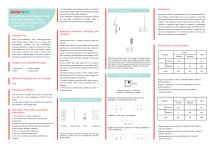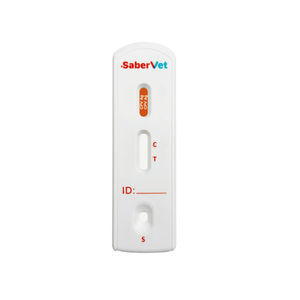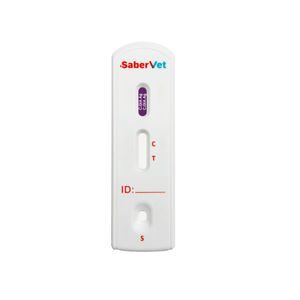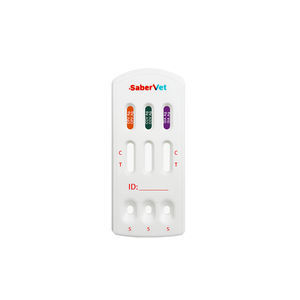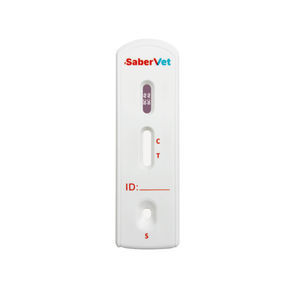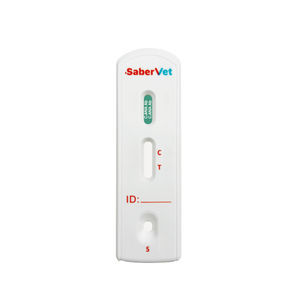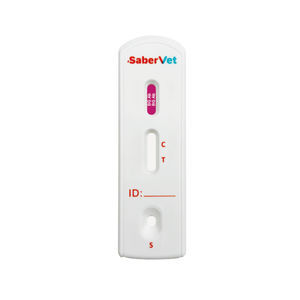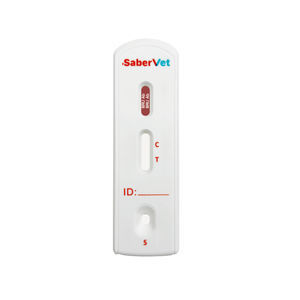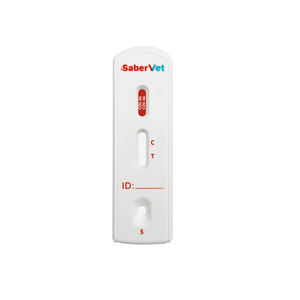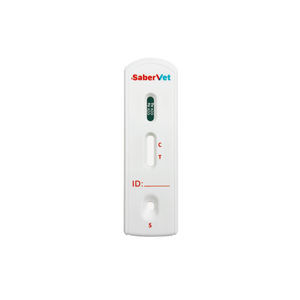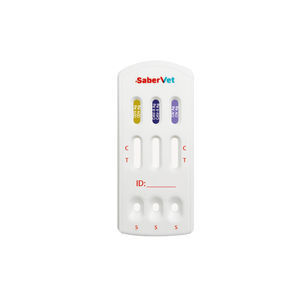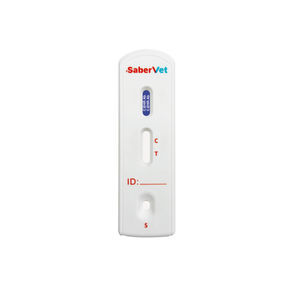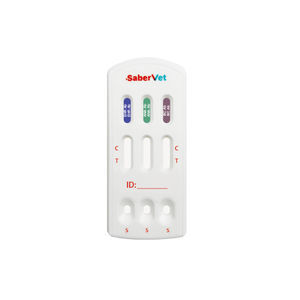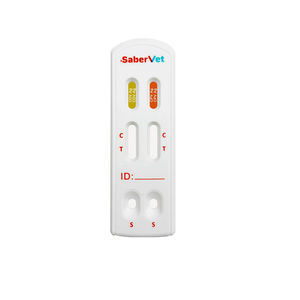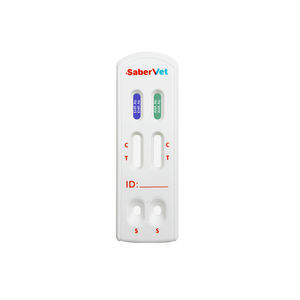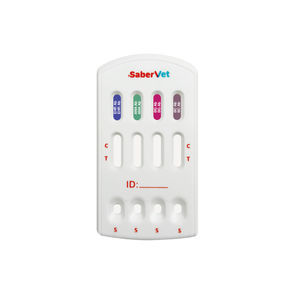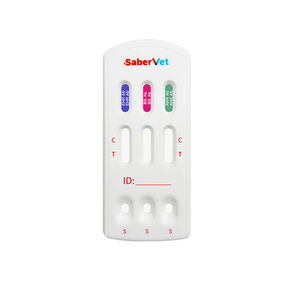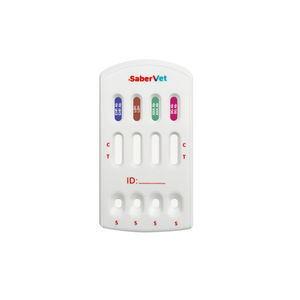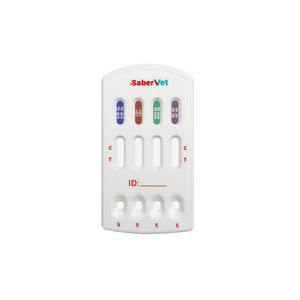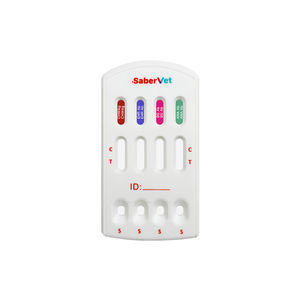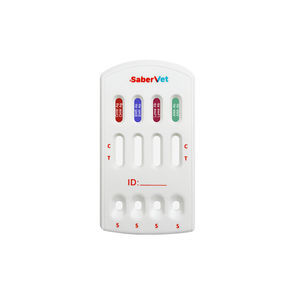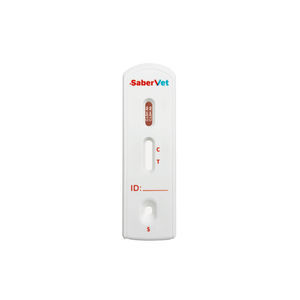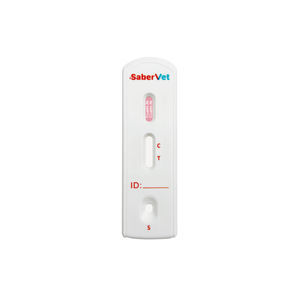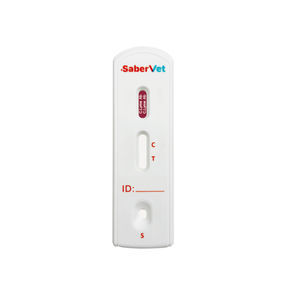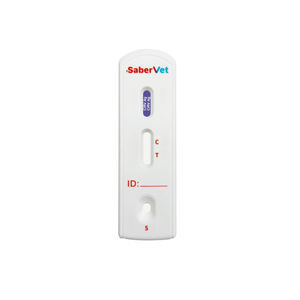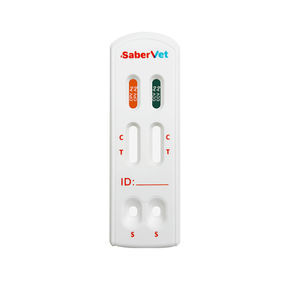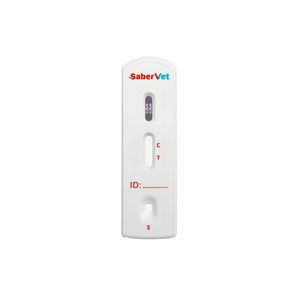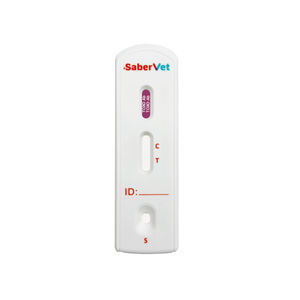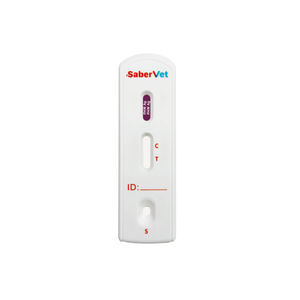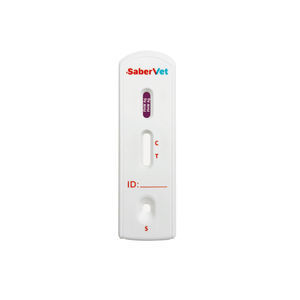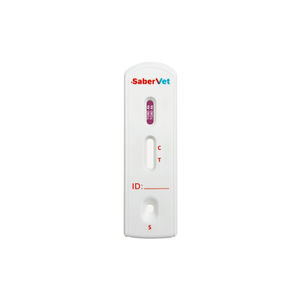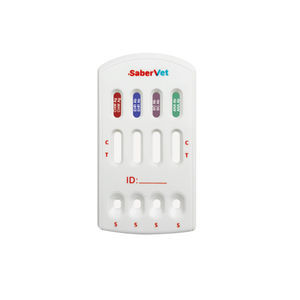
- Laboratory
- Laboratory medicine
- Rapid infectious disease test
- Hangzhou Antigenne Technology Co. Ltd
- Company
- Products
- Catalogs
- News & Trends
- Exhibitions
Rapid infectious disease test SaberVetveterinaryfor caninesbacteria
Add to favorites
Compare this product
fo_shop_gate_exact_title
Characteristics
- Applications
- for infectious diseases
- Application field
- veterinary
- Patient type
- for canines
- Micro-organism
- bacteria, Ehrlichia, Borrelia burgdorferi
- Sample type
- serum, plasma, whole blood
- Analysis mode
- immunoassay, lateral flow
- Format
- cassette
Description
Canine Ehrlichia/Lyme/Anaplasma Antibody Combo Rapid Test offered by Antigenne is a lateral flow immunoassay intended for the qualitative detection of specific antibody from canine ehrlichia(C.EHR)、canine lyme(C.LYM) and canine anaplasma (C.ANA) in canine whole blood, serum or plasma samples. The test is useful for determination of C.EHR、C.LYM and C.ANA infection.
Description
Canine Ehrlichiosis, Canine Lyme Disease and Canine Anaplasma Disease are three common infectious diseases in dogs, all of which are transmitted by ticks but caused by different pathogens.
Common points of Canine Ehrlich’s, Canine Lyme Disease and Canine Anaplasma
Route of transmission:
All three diseases are transmitted through tick bites.
Clinical symptoms:
They may all cause nonspecific symptoms such as fever, lethargy, loss of appetite, joint pain, and enlarged lymph nodes.
Geographic distribution:
These diseases have a global distribution and are especially common in areas where ticks are active.
Differences of canine ehrlichiosis, canine lyme disease, and canine anaplasma
Pathogen
Canine Ehrlich’s disease: caused by Ehrlichia canis.
Canine Lyme disease: caused by Borrelia burgdorferi.
Canine Anaplasmosis: caused by the bacteria Anaplasma.
Specific symptoms
Canine Ehrlichiosis: common symptoms include nosebleeds, bleeding tendencies, and eye problems (e.g., uveitis).
Canine Lyme Disease: Characteristic symptoms include chronic arthritis, lameness, and kidney damage.
Canine Anaplasma disease: the main symptoms are acute anemia, jaundice and splenomegaly.
Exhibitions
Meet this supplier at the following exhibition(s):

Other Hangzhou Antigenne Technology Co. Ltd products
Canine
Related Searches
- Blood rapid diagnostic test
- Rapid lateral flow test
- Immunoassay rapid diagnostic test
- Cassette rapid diagnostic test
- Virus rapid diagnostic test
- Serum rapid diagnostic test
- Plasma rapid diagnostic test
- Infectious disease rapid diagnostic test
- Whole blood rapid diagnostic test
- Rapid respiratory infection test
- Urine rapid screening test
- Bacteria rapid diagnostic test
- Rapid feces test
- Clinical rapid diagnostic test
- Nasal rapid diagnostic test
- Obstetrical/gynecological rapid test
- Rapid oral flu test
- Dog rapid test
- Laboratory rapid diagnostic test
- Coronavirus rapid diagnostic test
*Prices are pre-tax. They exclude delivery charges and customs duties and do not include additional charges for installation or activation options. Prices are indicative only and may vary by country, with changes to the cost of raw materials and exchange rates.


